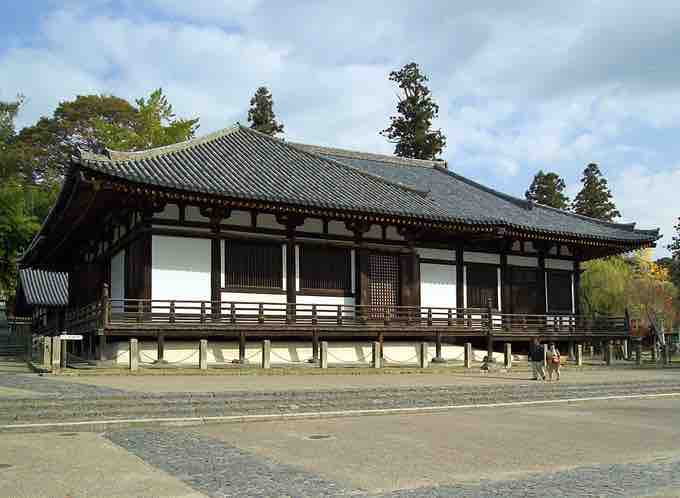Background: The Nara period
The Nara period of the 8th century—so named because the seat of Japanese government was located in the city of Nara from 710 until 784—is often portrayed as a golden age in Japanese history. The period marked the emergence of a strong Japanese state and was characterized by a cultural flowering. The transmission of Buddhism had provided the initial impetus for contact between China, Korea, and Japan, and the Japanese recognized facets of Chinese culture that could profitably be incorporated into their own. These facets included a system for converting ideas and sounds into writing; historiography; complex theories of government, such as an effective bureaucracy; and, most important for the arts, new technologies, new building techniques, more advanced methods of casting in bronze, and new techniques and media for painting.
The Tōdaiji Temple
Temple-building in the 8th century was focused around the Tōdaiji in Nara. Constructed as the headquarters for a network of temples in each of the provinces, the Tōdaiji is the most ambitious religious complex erected in the early centuries of Buddhist worship in Japan. Appropriately, the main Buddha hall, or Daibutsuden, was enshrined with the Rushana Buddha, a 16.2-meter (53-foot) Buddha completed in 752 that represents the essence of Buddhahood, just as the Tōdaiji represented the center for imperially-sponsored Buddhism and its dissemination throughout Japan. Only a few fragments of the original statue survive, and the present hall and central Buddha are reconstructions from the Edo period.
Daibutsu of Tōdai-ji.
The Great Buddha statue (Daibutsu) has been recast several times for various reasons, including earthquake damage. The current hands of the statue were made in the Momoyama Period (1568–1615), and the head was made in the Edo period (1615–1867).
Clustered around the Daibutsuden on a gently sloping hillside are a number of secondary halls: the Hokke-dō (Lotus Sutra Hall), with its principal image; the Fukukenjaku Kannon (the most popular bodhisattva), crafted of dry lacquer (cloth dipped in lacquer and shaped over a wooden armature); the Kaidanin (Ordination Hall) with its magnificent clay statues of the Four Guardian Kings; and the storehouse, called the Shōsōin. This last structure is of great importance as an art-historical cache, because in it are stored the utensils that were used in the temple's dedication ceremony in 752 and the eye-opening ritual for the Rushana image, as well as government documents and many secular objects owned by the Imperial family.

Hokkedô at Todaiji in Nara Japan
The Tōdaiji (dating back to 728) is the most ambitious religious complex erected in the early centuries of Buddhist worship in Japan.